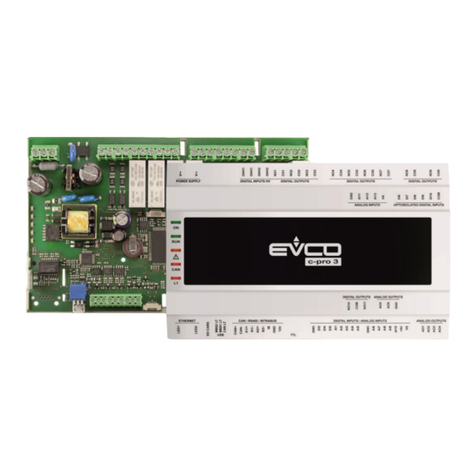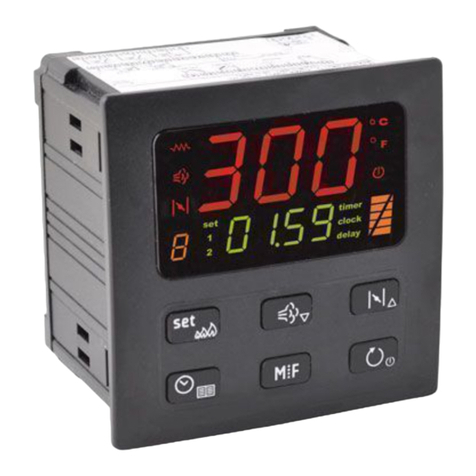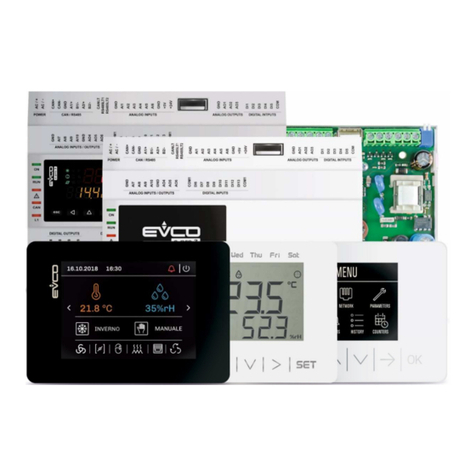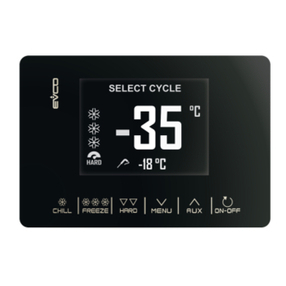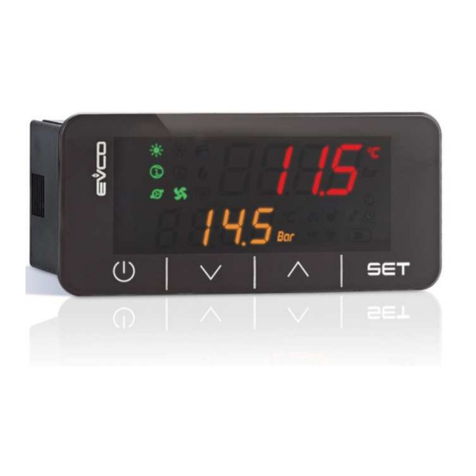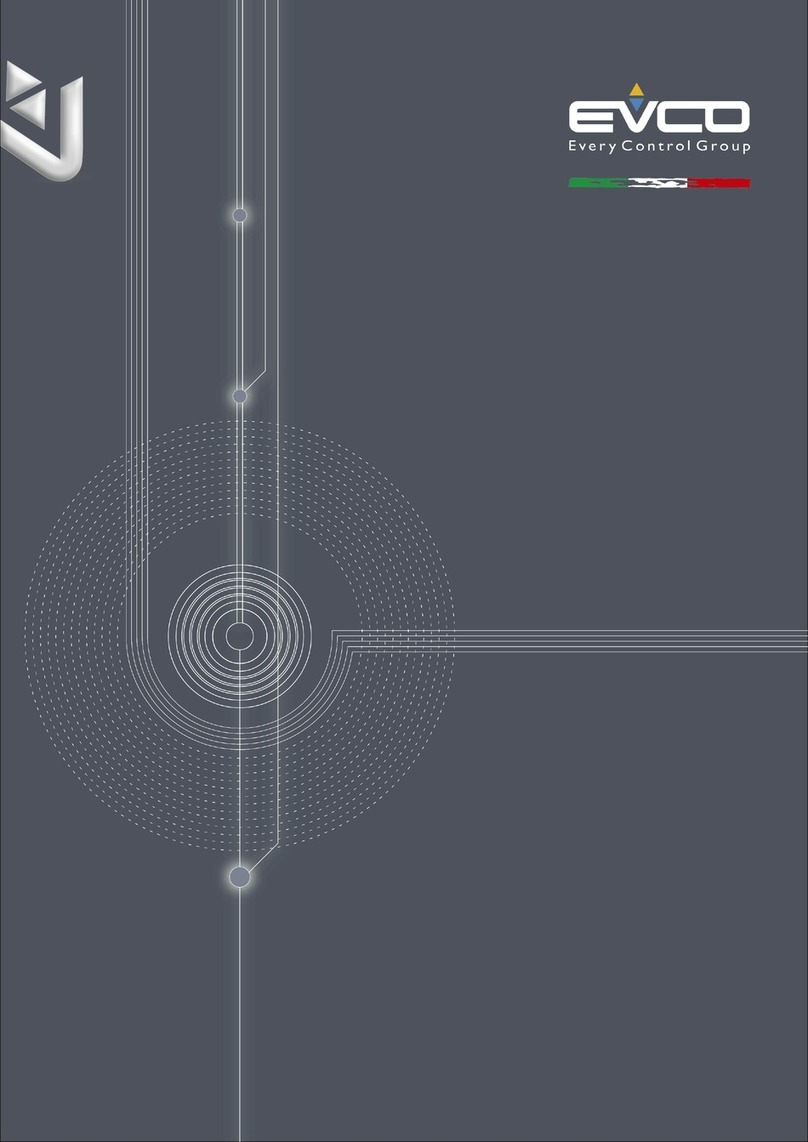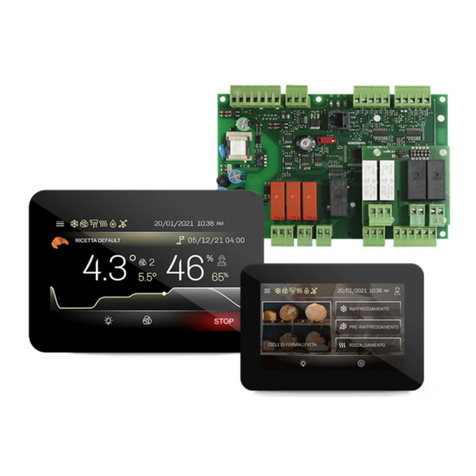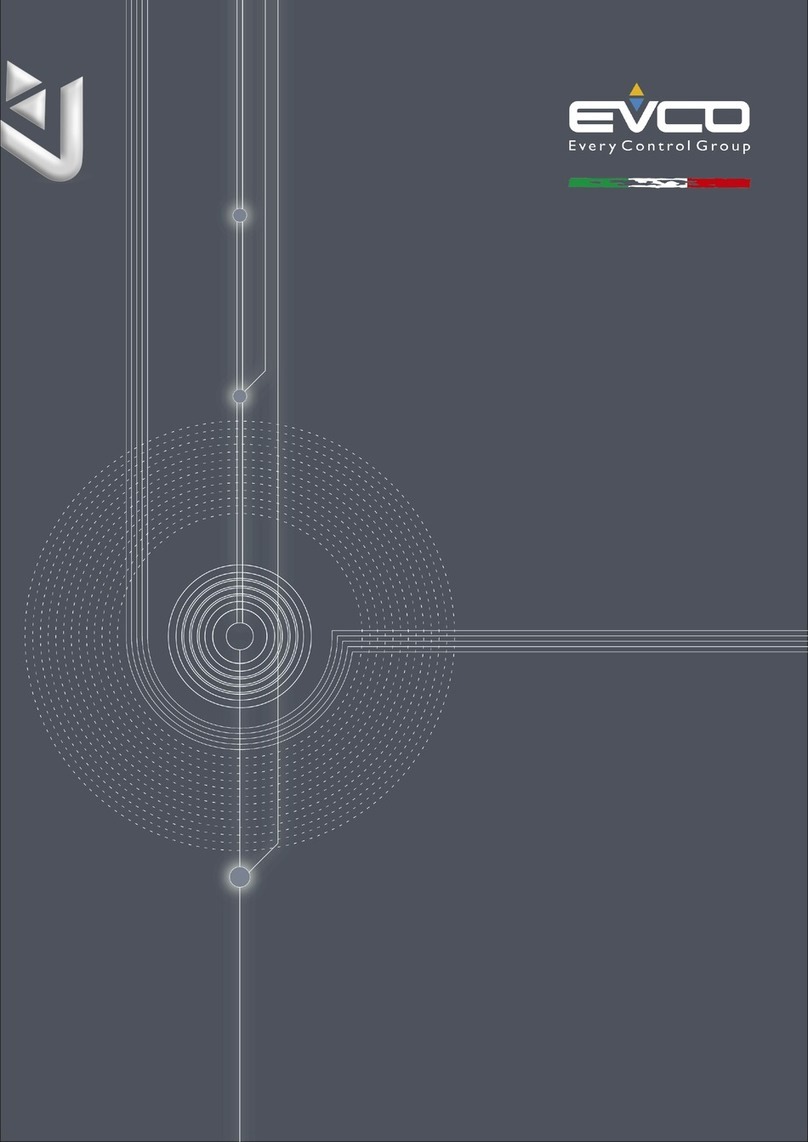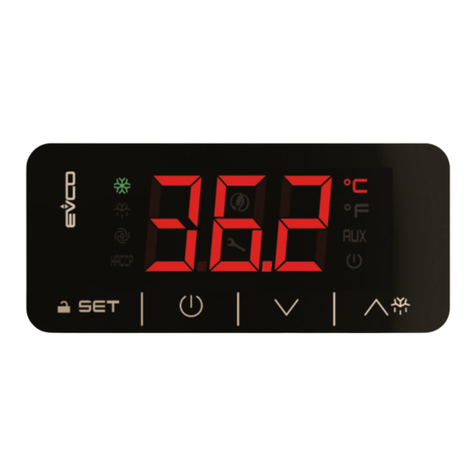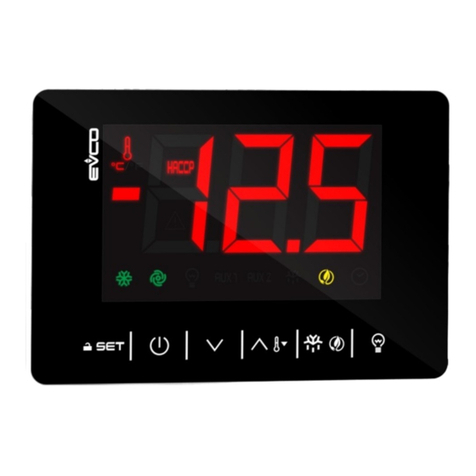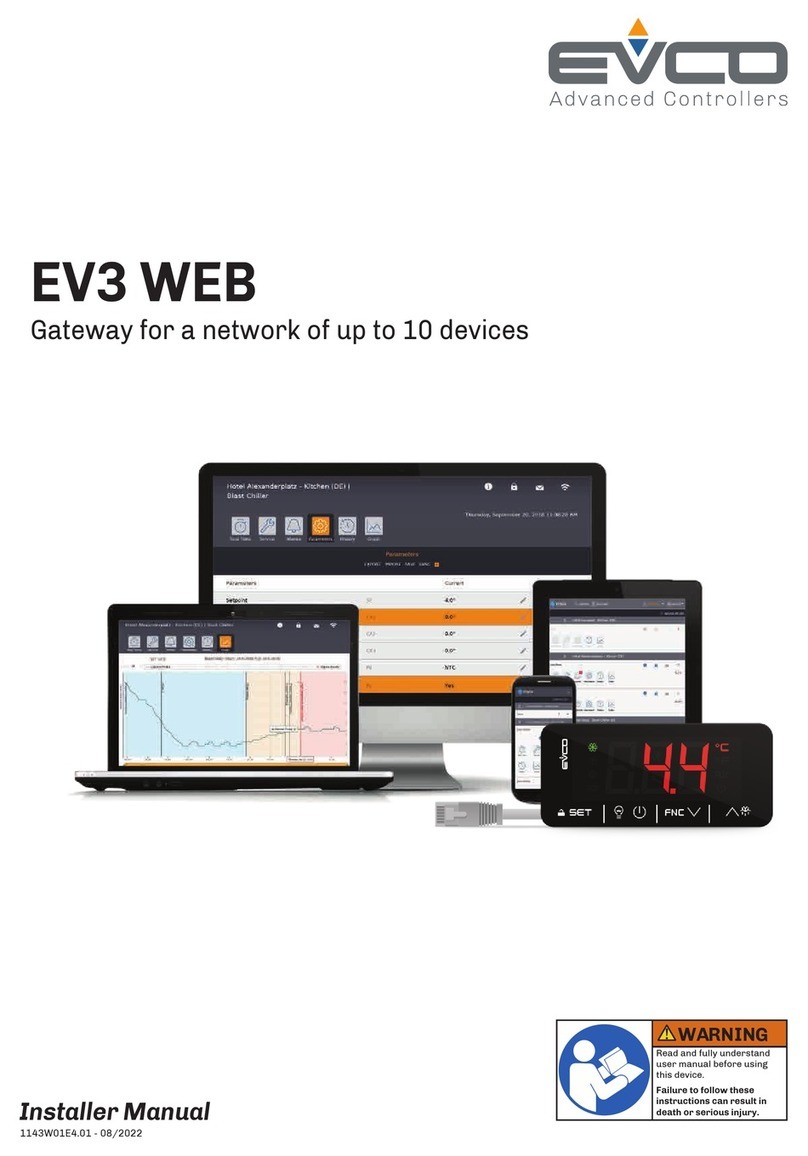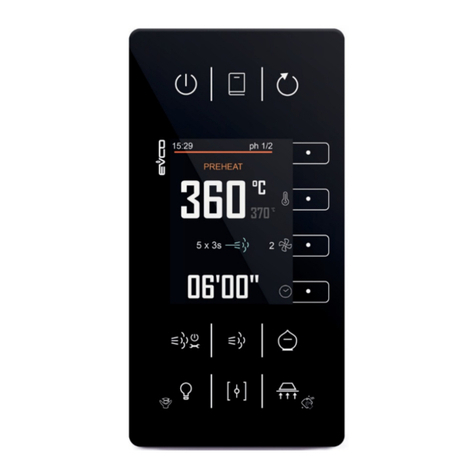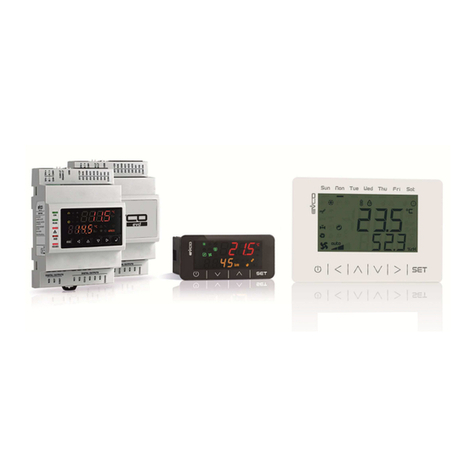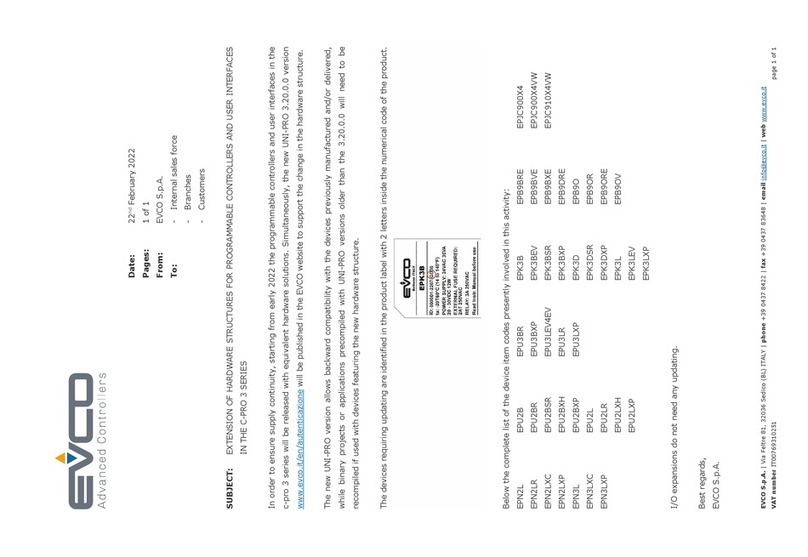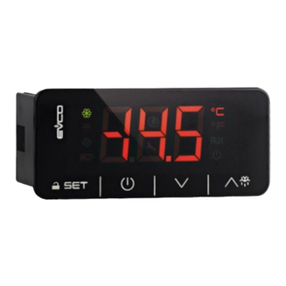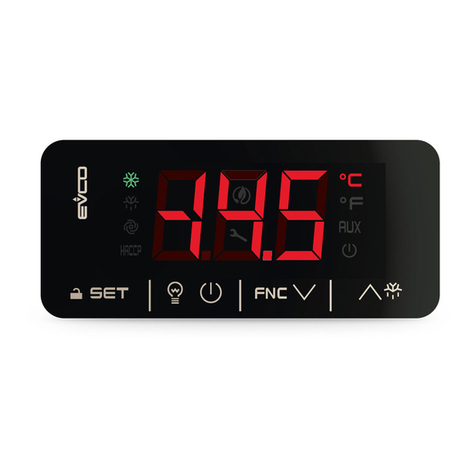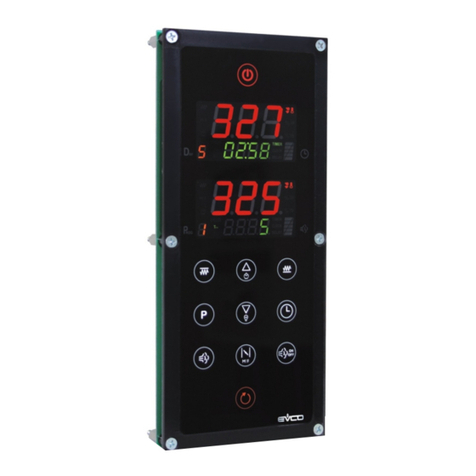
Evco S.p.A. EVF815 | Installer manual ver. 1.1 | Code 144F815E114
page 3 of 58
Index
1INTRODUCTION ................................................................................................................................. 2
1.1 Introduction....................................................................................................................................... 2
1.2 Summary table of the main features and the models available ................................................................. 2
2DESCRIPTION .................................................................................................................................... 2
2.1 Description of the user interface........................................................................................................... 2
2.2 Description of the control module ......................................................................................................... 2
3DIMENSIONS AND INSTALLATION ........................................................................................................ 2
3.1 User interface dimensions.................................................................................................................... 2
3.2 Control module dimensions.................................................................................................................. 2
3.3 User interface installation .................................................................................................................... 2
3.4 Control module installation .................................................................................................................. 2
3.5 Installation warnings .......................................................................................................................... 2
4ELECTRIC CONNECTION...................................................................................................................... 2
4.1 Electric connection.............................................................................................................................. 2
4.1.1 Connection of the terminating resistors.........................................................................................2
4.2 Warnings for the electric connection ..................................................................................................... 2
5USER INTERFACE ............................................................................................................................... 2
5.1 Foreword........................................................................................................................................... 2
5.2 Switching the device on/off.................................................................................................................. 2
5.3 The display........................................................................................................................................ 2
5.4 Cabinet temperature display ................................................................................................................ 2
5.5 Display of the temperature detected by the needle probe ........................................................................ 2
5.6 Evaporator temperature display ........................................................................................................... 2
5.7 Defrosting activation in manual mode ................................................................................................... 2
5.8 Switch-on/off of the cabinet light in manual mode .................................................................................. 2
5.9 Locking/unlocking the keyboard ........................................................................................................... 2
5.10 Silencing the buzzer ....................................................................................................................... 2
6OPERATION ....................................................................................................................................... 2
6.1 Foreword........................................................................................................................................... 2
6.2 Blast chilling and storage..................................................................................................................... 2
6.3 Hard blast chilling and storage ............................................................................................................. 2
6.4 Deep freezing and storage................................................................................................................... 2
6.5 Soft deep freezing and storage............................................................................................................. 2
6.6 Pre-cooling start-up............................................................................................................................ 2
6.7 Management of the test regarding correct insertion of the needle probe.................................................... 2
6.8 Switching on UV light for sterilisation cycle ............................................................................................ 2
6.9 Heating the needle probe .................................................................................................................... 2
7“HACCP” FUNCTION............................................................................................................................ 2
7.1 Foreword........................................................................................................................................... 2
7.2 Display of information relative to the HACCP alarms ............................................................................... 2
7.3 Deleting the information relative to the HACCP alarms ............................................................................ 2
8COMPRESSOR OPERATING HOURS COUNT ............................................................................................ 2
8.1 Display of compressor operating hours.................................................................................................. 2
8.2 Deleting the compressor operating hours .............................................................................................. 2
9CONFIGURATION................................................................................................................................ 2
9.1 Setting the real date and time.............................................................................................................. 2
9.2 Setting the configuration parameters .................................................................................................... 2
